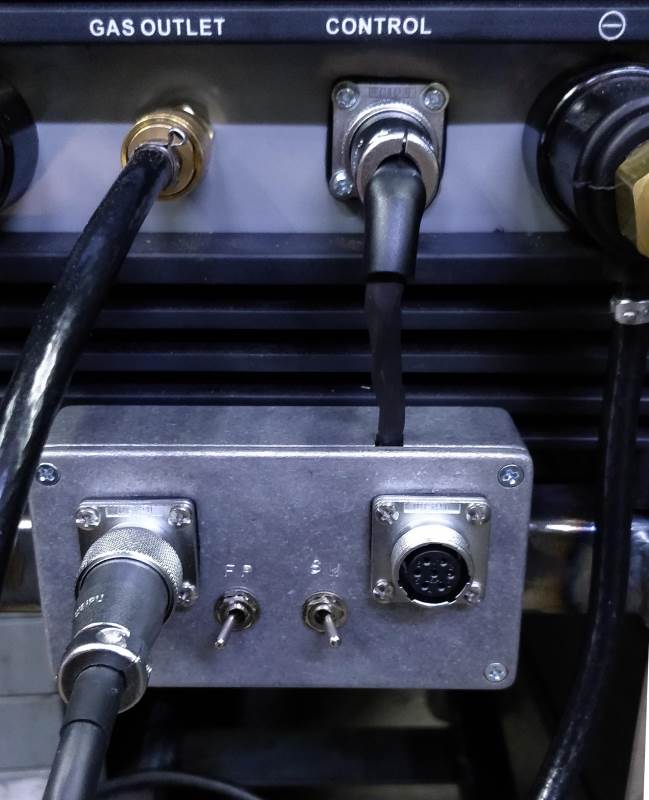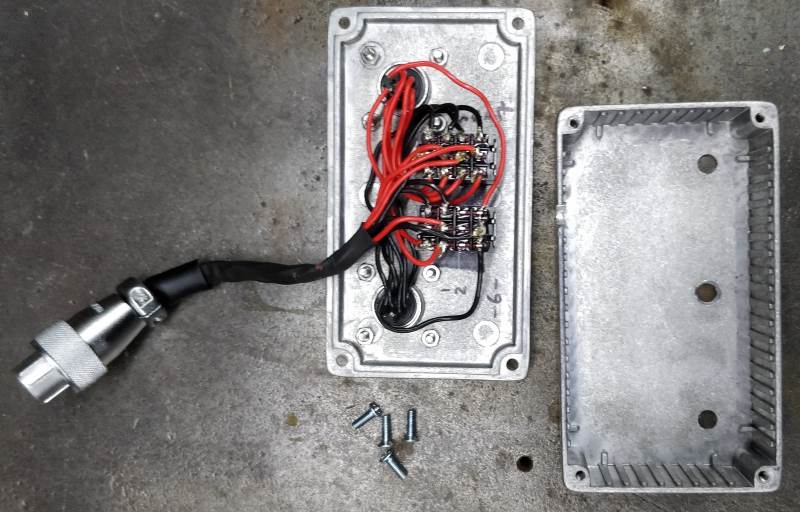Welding Control Switch

This is a switch box I added to my welding trolley. It's intended to solve two (arguably rather minor) problems:
- When I'm using a foot pedal with the welder, I often find that I accidentally knock the foot pedal while I'm setting up for a weld. The torch is too far away from the workpiece for the arc to start, but this causes the pre- and post-weld gas to flow, wasting a bit of argon every time I do it.
- I often use the foot pedal to figure out what sort of current I should weld at for a given material and then change to using a switch on the torch for further welds. This helps with being able to work in more awkward positions than I can with the foot pedal. The problem with this is that I find myself having to regularly swap between the foot pedal and the torch switch.
The switch box solves both of these problems by having both the torch switch and the foot pedal permanently connected (although the torch switch is disconnected in the photo above). The two switches on the box control which one is actually connected to the welder. The left-hand switch (which I almost never touch) controls the potentiometer connections (and the connection that tells the welder whether a foot pedal is connected). The right-hand switch just controls the switch connection.
When I'm using the foot pedal and just want to stop it being accidentally triggered, I can flip the right-hand switch over (as shown in the photo above) and the switch part of the foot pedal is disconnected. The arc then won't start. If I ever get or make a torch-mounted potentiometer, the left-hand switch is likely to get more use.
The R-Tech website lists the connections for the welder:
- Switch wire.
- Switch wire.
- Potentiometer low.
- Potentiometer wiper.
- Potentiometer high.
- Foot pedal fitted indication connection.
- Foot pedal fitted indication connection.
The switch on the torch and the foot pedal connect pins 1 & 2 together; connecting pins 6 & 7 together tells the machine the foot pedal is fitted. I had hoped that the 6 & 7 connection would do something useful (like change the welder between foot pedal and switch mode), but as far as I can tell the machine largely ignores it, despite what the R-Tech website implies.
The plugs are available from the R-Tech website, but the sockets aren't. Having investigated a little, the connectors appeared to be a Weipu WS16-7. I found these on ebay: if you're interested, search for "WS16 connector". They were much cheaper than buying from R-Tech as well: I bought three plugs and three sockets for £12.20 including delivery.

This image (like all images on this website, you can click for a bigger view) shows the inside of the switch box. The switches are 4PDT type (also bought through ebay). This type of switch effectively has four switches in one box with a single lever that flips all of the switches at the same time. Pin 6 (which appears to be 0 V) is connected permanently to all three connections (the plug and two sockets). It is actually soldered onto one of the switch connections, but the three connections are shorted out so the actual switch has no effect. Pins 1 & 2 are switched by the bottom switch in the photo; pins 3, 4, 5 & 7 are switched by the top switch in the photo. The unit is attached to the welding trolley with three M5 cap screws (not shown).
This website is free and ad-free, but costs me money to run. If you'd like to support this site, please consider making a small donation or sending me a message to let me know what you liked or found useful.
